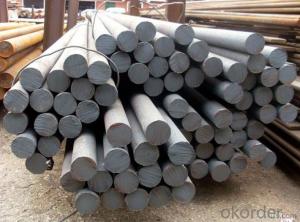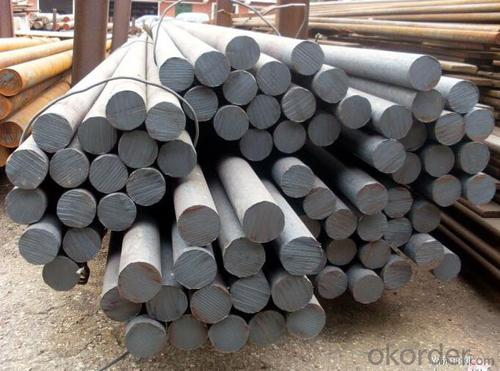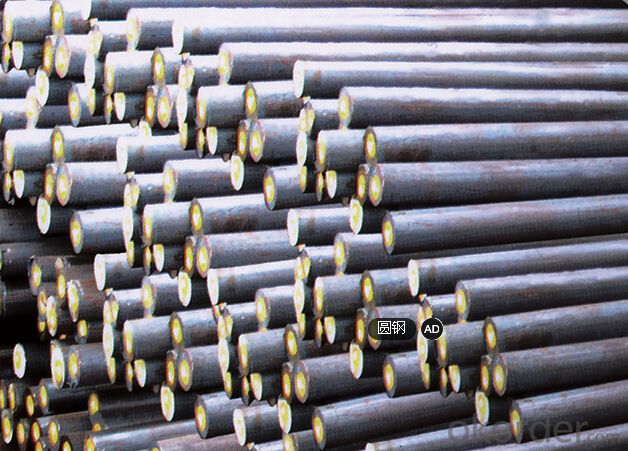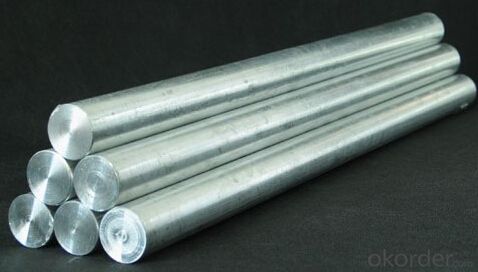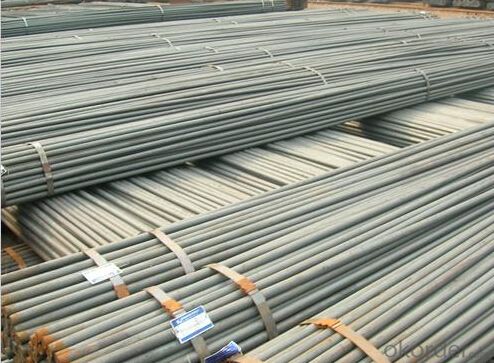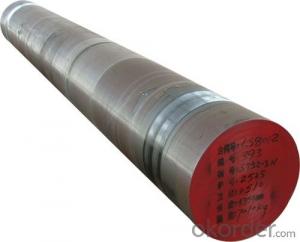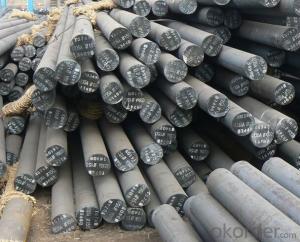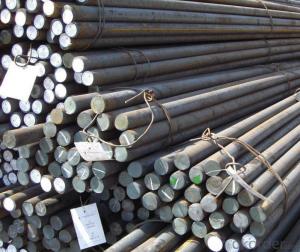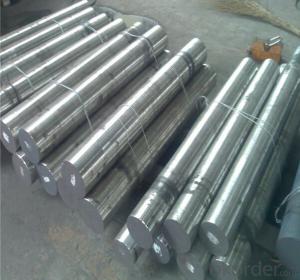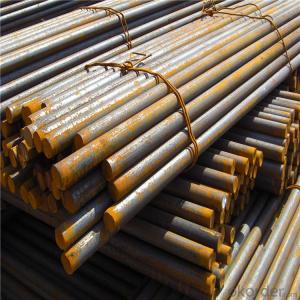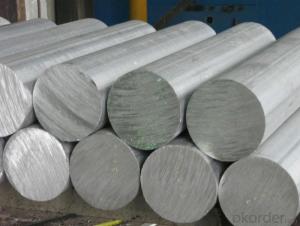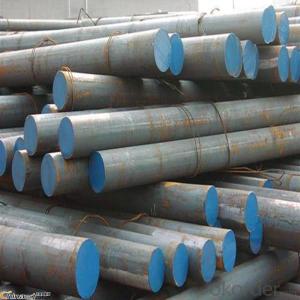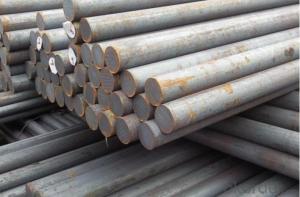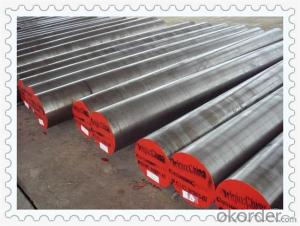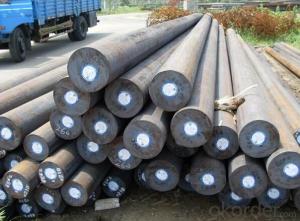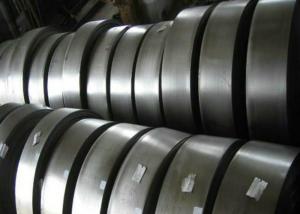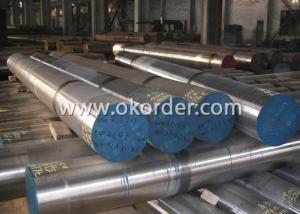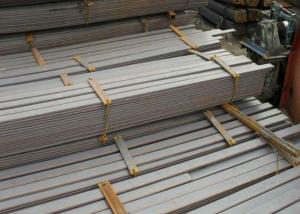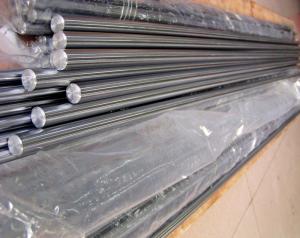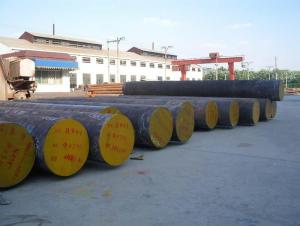Grade SAE4340 High Speed Steel Bar for Gears
- Loading Port:
- Qingdao
- Payment Terms:
- TT OR LC
- Min Order Qty:
- 5 m.t.
- Supply Capability:
- 100000 m.t./month
OKorder Service Pledge
Quality Product, Order Online Tracking, Timely Delivery
OKorder Financial Service
Credit Rating, Credit Services, Credit Purchasing
You Might Also Like
Specification
Type:
Carbon Steel,Spring Steel,Bearing Steel,Gear Steel,Deformed Steel,Stainless Steel,Alloy Steel
Shape:
Steel Coil,Steel Sheet,Steel Wire Rod,Steel Flat Bar,Steel Square Bar,Steel Angle,Steel Round Bar,Steel Billets
Technique:
Hot Rolled,Cold Rolled,Cold Drawn,ERW,Forged,Saw,Extruded,EFW,Spring
Surface Treatment:
Galvanized,Coated,Copper Coated,Color Coated,Oiled,Dry,Chromed Passivation,Polished,Bright,Black,PVDF Coated
Certification:
ISO,SGS,BV,IBR,RoHS,CE,API,BSI,UL
Thickness:
16-800mm
Width:
16-800mm
Length:
6-12m
Outer Diameter:
16-800mm
Net Weight:
100kg
Packaging:
seaworthy packaging
Grade SAE4340 High Speed Steel Bar for Gears
Detailed Information of Grade SAE4340 High Speed Steel Bar for Gears
| Name | Steel Round Bar |
| Shape | Round Bar/Square Bar/Flat Bar/Plate/Wire |
| Standard | GB/ASTM/SAE/AISI/DIN/JIS/EN/BS |
| Surface Treatment: | Black/Peeling/Polished/Machined |
| Delivery Condition: | Hot Rolled or Forged/Peeled or Black Surface |
| Test | SGS/UT 100% Elements Testing |
| Certificate: | ISO/Mill Certificate |
| Service: | 24 hours online service / |
| more than 20 years trading and manufacture | |
| Quality Assurance: | the third party inspection, such as SGS, BV, TUV…etc. is acceptable |
| Packaging Details: | Seaworthy Packaging or as per customer's packing instruction |
Product Overviews of 4130 Steel Rod/4130 Steel Bar/Alloy Steel Bar
| Product Name | Typical Grades | Diameter(mm) | Standard Adopted |
| Carbon Steel | 20 (1020/S20C/C22) | ||
| 40 (1040/S40C/C40) | Ø16-Ø300 | ||
| 45 (1045/S45C/C45) | |||
| Bearing Steel | GCr9 (51100/SUJ1) | ||
| GCr15 (52100/SUJ2/100Gr6) | Ø12-Ø250 | ||
| GCr9SiMn (A485-Gr.1/SUJ3) | GB/SAE/ | ||
| Cr-Mo Steel | 20Cr (5120/SCr420H/20Cr4) | JIS/DIN | |
| 40Cr (5140/SCr440/41Cr4) | Ø12-Ø250 | ||
| 42CrMo(4140/SCM440/42CrMo4) | |||
| Gear Steel | 20CrNiMo | ||
| 20CrMn(5115/SMnC420/20MnCr5) | Ø16-Ø600 | ||
| 20CrNiMo(8620/SNCM220/20CrMiMo2) |
Company Introduction of Grade SAE4340 High Speed Steel Bar for Gears
CNBM International Corporation is the most import and export platform of CNBM group(China National Building Material Group Corporation) ,which is a state-owned enterprise, ranked in 270th of Fortune Global 500 in 2015.
With its advantages, CNBM International are mainly concentrate on Cement, Glass, Iron and Steel, Ceramics industries and devotes herself for supplying high quality series of refractories as well as technical consultancies and logistics solution.
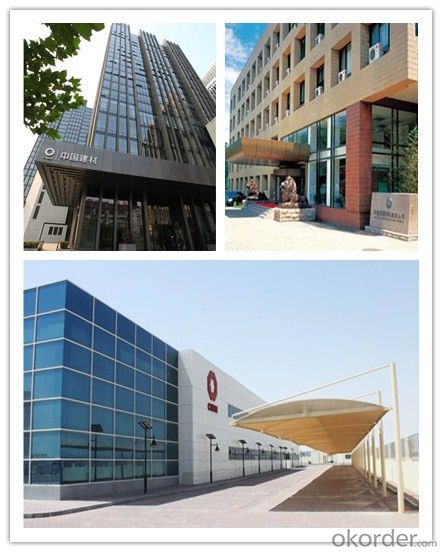
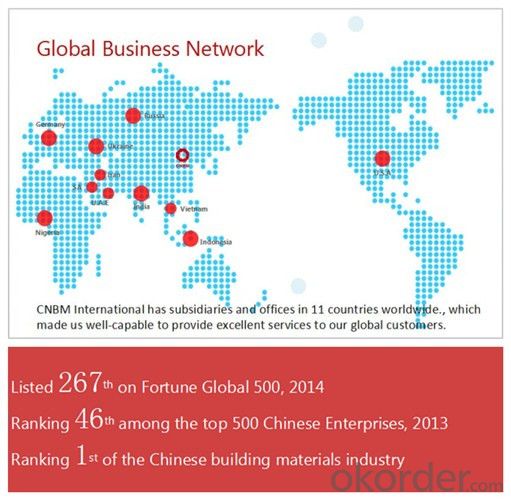
| After-sale service | l CNBM provides the services and support you need for every step of our cooperation. We’re the business partners you can trust; you can relax and get on with doing business. |
| l For any problem, please kindly contact us at any your convenient time, we’ll reply you in our first priority within 24 hours | |
| Advantages | l Industry experience over 20 years. |
| l Shipment of goods -More than 70 countries worldwide. | |
| l The most convenient transport and prompt delivery. | |
| l Competitive price with best service. | |
| l High technical production line with top quality products. | |
| l High reputation based on best quality products. | |
Packaging & Delivery of Grade SAE4340 High Speed Steel Bar for Gears
| Packaging Detail | Sea worthy packing /as per customer's packing instruction |
| Delivery Detail | 15 ~ 40 days after receiving the deposit |
Products Show
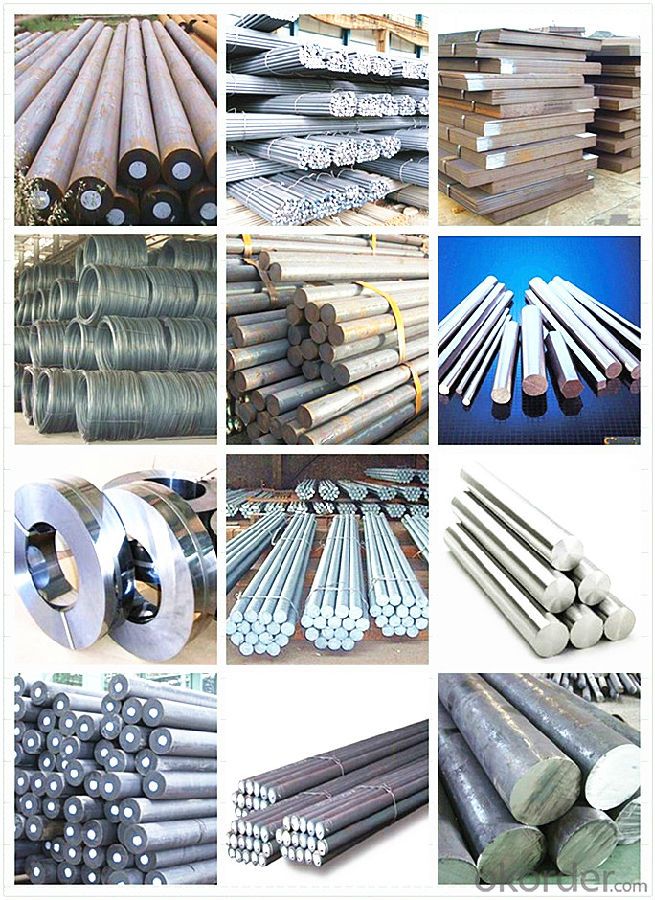
FAQ:
| Are you a trading company or manufacturer? | Manufacturer |
| What’s the MOQ? | 1000m2 |
| What’s your delivery time? | 15-20 days after downpayment received |
| Do you Accept OEM service? | Yes |
| what’s your delivery terms? | FOB/CFR/CIF |
| What's the Payment Terms? | 30% as deposit,70% before shipment by T/T |
| Western Union acceptable for small amount. | |
| L/C acceptable for large amount. | |
| Scrow ,Paybal,Alipay are also ok | |
| Why choose us? | Chose happens because of quality, then price, We can give you both. Additionally, we can also offer professional products inquiry, products knowledge train (for agents), smooth goods delivery, excellent customer solution proposals. |
| What's your available port of Shipment? | Main Port, China |
| What’s your featured services? | Our service formula: good quality+ good price+ good service=customer's trust |
| Where are your Market? | Covering more than 160 countries in the world |
- Q: How can I determine the cooling water flow of square billet mold for special steel?
- Mold heat balance method. If the heat of the molten steel in the mould is taken away from the cooling water, the heat released by the solidification of the molten steel is equal to the amount taken away by the cooling water
- Q: How does special steel contribute to the durability of products?
- Special steel contributes to the durability of products due to its unique properties and composition. It is designed to have increased strength, hardness, and resistance to wear and corrosion, making it suitable for demanding applications. Special steel enhances the structural integrity and longevity of products, ensuring they can withstand heavy loads, extreme temperatures, and harsh environments without compromising performance or safety.
- Q: What are the different forming techniques for special steel?
- There are several different forming techniques for special steel, including hot forming, cold forming, and casting. Hot forming involves heating the steel above its recrystallization temperature and shaping it into the desired form using tools or dies. Cold forming, on the other hand, involves manipulating the steel below its recrystallization temperature, often through processes like rolling, bending, or extrusion. Casting is another common technique, where molten steel is poured into a mold and allowed to solidify into the desired shape. Each technique has its own advantages and is chosen based on the specific requirements of the application.
- Q: Can special steel be recycled?
- Yes, special steel can be recycled.
- Q: How does special steel contribute to the oil and gas equipment industry?
- Enhanced strength, corrosion resistance, and heat resistance are crucial attributes of special steel, which plays a vital role in the oil and gas equipment industry. This type of steel is specifically engineered to endure the extreme conditions encountered during oil and gas exploration, extraction, and processing. The superior strength of special steel is one of its primary advantages in this industry. Oil and gas equipment, such as drill pipes, wellheads, and pipelines, are subjected to high pressure, heavy loads, and harsh environments. Thanks to its high tensile and yield strength, special steel ensures that these components can withstand such demanding conditions without experiencing failures, thus guaranteeing the safety and reliability of the equipment. Another significant benefit of special steel in the oil and gas equipment industry is its corrosion resistance. The extraction and transportation of oil and gas involve exposure to corrosive substances, such as hydrogen sulfide, carbon dioxide, and saltwater. Special steel is specifically designed to resist corrosion, thereby minimizing the risk of equipment degradation, leaks, and costly maintenance. Furthermore, special steel possesses excellent heat resistance properties. The oil and gas industry often operates equipment at high temperatures during processes such as oil refining, gas compression, or steam injection. The ability of special steel to withstand high temperatures without compromising its mechanical properties makes it an ideal choice for critical components like valves, heat exchangers, and turbines. The use of special steel also enables the oil and gas industry to explore and extract resources from challenging environments. Offshore drilling rigs, for instance, encounter harsh conditions such as strong waves, saltwater exposure, and extreme temperatures. Special steel's resistance to these environmental factors ensures the durability and longevity of offshore equipment. In conclusion, special steel significantly contributes to the oil and gas equipment industry by providing enhanced strength, corrosion resistance, and heat resistance. By employing this type of steel, the industry can ensure the reliability, safety, and longevity of its equipment, ultimately improving operational efficiency and reducing downtime.
- Q: What are the main applications of special steel in the packaging industry?
- Special steel is widely used in the packaging industry for a range of applications. One of the main uses is in the manufacturing of packaging machinery, such as filling machines, sealing machines, and wrapping machines, where the high strength and durability of special steel components ensure smooth operation and longevity. Additionally, special steel is utilized for the production of packaging tools, like cutters, blades, and molds, which require resistance to wear and corrosion. The use of special steel in the packaging industry helps to enhance productivity, improve product quality, and ensure the safety and integrity of packaged goods.
- Q: How does the heat treatment process affect the properties of special steel?
- The properties of special steel are greatly affected by the heat treatment process. This process involves controlled heating and cooling of the steel to modify its microstructure and, as a result, its mechanical properties. To begin, heat treatment can increase the hardness of special steel. By heating the steel to a specific temperature and then rapidly cooling it through quenching, the steel undergoes a phase transformation that boosts its hardness. This is especially advantageous for applications that demand high strength and resistance to wear, such as cutting tools or bearings. Furthermore, heat treatment can enhance the toughness of special steel. By tempering the quenched steel at a lower temperature, the brittleness caused by rapid cooling can be minimized, leading to improved toughness and ability to withstand impacts. This is crucial in applications where the steel must endure sudden shocks or impacts, like in automotive or aerospace components. Moreover, heat treatment can also improve the overall strength of special steel. Through a combination of heating, cooling, and tempering processes, the steel's grain structure can be refined, resulting in increased strength and resistance to deformation. This is particularly critical for structural applications where the steel must withstand heavy loads or extreme conditions. Additionally, the heat treatment process can influence the corrosion resistance of special steel. By subjecting the steel to specific heat treatment cycles, the formation of certain phases or chemical compounds can be encouraged, leading to enhanced resistance against corrosion or oxidation. This is essential for applications exposed to harsh environments or corrosive substances, such as in marine or chemical industries. In conclusion, the heat treatment process is essential in modifying the properties of special steel. By carefully controlling the heating, cooling, and tempering cycles, the hardness, toughness, strength, and corrosion resistance of the steel can be significantly improved. This allows for the production of special steel with customized properties to meet the specific requirements of various industrial applications.
- Q: What are the different casting methods used for special steel?
- For special steel, various casting methods are commonly utilized, depending on the specific requirements and needs of the application. These methods encompass investment casting, sand casting, continuous casting, and centrifugal casting. 1. Investment casting: To create the desired part, a wax pattern is made and coated with a ceramic shell. The wax is melted away, leaving a hollow shell that is then filled with molten steel. After solidification, the ceramic shell is broken, yielding the final part. Investment casting enables the production of accurate and intricate shapes, making it ideal for high-quality and precise special steel components. 2. Sand casting: Among the oldest and most prevalent casting techniques, sand casting involves forming a mold using a mixture of sand and a binder like clay. The mold is shaped around a pattern of the desired part and molten steel is poured into it. Upon cooling and solidification, the casting is complete. Sand casting is versatile and cost-effective, suitable for producing large and heavy special steel components. 3. Continuous casting: This method is commonly employed for manufacturing long steel products such as bars, rods, and billets. Molten steel is continuously poured into a water-cooled mold, which solidifies the outer surface. The solidified steel is then continuously withdrawn as more molten steel is poured in. Continuous casting ensures high-quality steel with a consistent cross-section, devoid of defects. 4. Centrifugal casting: In this technique, molten steel is poured into a rotating mold. The centrifugal force drives the molten steel towards the outer walls, resulting in a dense and compact casting with enhanced mechanical properties. Centrifugal casting is particularly suitable for producing cylindrical or tubular special steel components such as pipes and rings. In summary, the selection of a casting method for special steel hinges on factors like part complexity, required quality and accuracy, component size and shape, and production volume. Each method has its advantages and limitations, necessitating careful consideration to determine the most appropriate casting technique for a specific application.
- Q: How does special steel perform in terms of magnetic properties?
- Special steel can exhibit a wide range of magnetic properties depending on its composition and processing. Some special steels, such as stainless steel, are generally non-magnetic or have very low magnetic permeability. However, certain types of special steel, such as tool steel or high-speed steel, can be engineered to possess magnetic properties suitable for specific applications, such as magnetic tools or electrical transformers. Overall, the magnetic properties of special steel can be tailored to meet the desired requirements for different applications.
- Q: How does special steel contribute to the defense aftermarket industry?
- Special steel plays a crucial role in the defense aftermarket industry by providing high-quality materials that are essential for the production of various defense equipment and components. The unique properties of special steel, such as its exceptional strength, durability, and resistance to corrosion and extreme temperatures, make it a preferred choice for manufacturing military vehicles, aircraft, weapons, and other defense systems. One of the key ways in which special steel contributes to the defense aftermarket industry is through its use in armor and ballistic protection. Special steel alloys are utilized to create armor plates and panels that can withstand high-velocity impacts and protect military personnel and vehicles from enemy fire. These materials offer enhanced protection levels, reducing the risk of casualties and damage during combat. Moreover, special steel is also employed in the production of aerospace components. The defense industry heavily relies on aircraft for various operations, including reconnaissance, surveillance, and combat. Special steel alloys are used to manufacture critical components such as landing gear, engine parts, and structural elements, ensuring the safety, reliability, and performance of military aircraft. Furthermore, special steel's resistance to corrosion and extreme conditions makes it suitable for the construction of naval vessels and submarines. These naval assets operate in harsh marine environments, exposed to saltwater, extreme temperatures, and constant mechanical stress. Special steel alloys with high-strength properties and corrosion resistance are utilized in the construction of ship hulls, propeller shafts, and other critical components, ensuring longevity and operational effectiveness. In addition to its direct applications, special steel also contributes to the defense aftermarket industry through its role in the supply chain. The production of defense equipment and components often requires highly specialized machinery and tools, which are made from special steel. The availability of these materials is essential for maintaining a robust defense industry, enabling the efficient production and maintenance of defense systems. Overall, special steel plays a vital role in the defense aftermarket industry by providing the necessary materials for the production of high-performance, reliable, and durable defense equipment. Its unique properties contribute to the safety, effectiveness, and longevity of military vehicles, aircraft, weapons, and naval vessels, ultimately enhancing the capabilities of defense forces around the world.
Send your message to us
Grade SAE4340 High Speed Steel Bar for Gears
- Loading Port:
- Qingdao
- Payment Terms:
- TT OR LC
- Min Order Qty:
- 5 m.t.
- Supply Capability:
- 100000 m.t./month
OKorder Service Pledge
Quality Product, Order Online Tracking, Timely Delivery
OKorder Financial Service
Credit Rating, Credit Services, Credit Purchasing
Similar products
Hot products
Hot Searches
Related keywords
